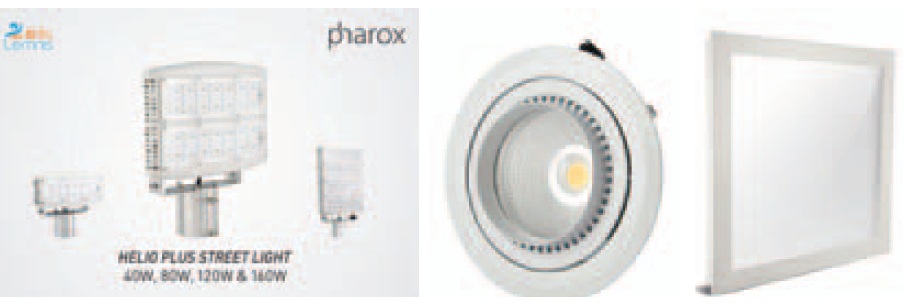
NTL entered the lighting business in 2002 as a small manufacturer of ballasts for CFLs. In 2009, it became India’s first company to manufacture LED lamps. Today, it is amongst the largest Indian company in the lighting industry. Arun Gupta discusses how LED lights, onceconsidered a premium product, have become a household product, thanks to the government mass procurement drive. The growth that the LED lighting industry has surpassed all expectations, feels Gupta.
What is your view on the government supporting LED lighting through schemes like UJALA, DELP, etc?
Government DELP and UJALA schemes have been instrumental in mass penetration of the energy efficient LED lighting in Urban and Rural households. LED lights which were fledgling due to high costs and the perception of being premium products, suddenly became products of mass distribution. Per unit cost came down drastically and the volumes increased hundred-fold. These schemes are helping consumers shift from current traditional sources of lighting to LED, which not only helps save electricity, but also creates a movement towards green sources of lighting.
DELP and UJALA schemes have made mass manufacturing a reality in India. EESL, the core agency for the distribution of energy efficient products, has set targets which are high and will benefit the industry. It plans to distribute 77 crore LED bulbs in the next year. As of now, EESL has already distributed more than 22 crore LED across India.
The focus of EESL has also been on street Light segment, where, as of now EESL has replaced 19,83,147 street lights across India. Under the National Street Lighting Program, 35 million conventional street lights are to be replaced with energy efficient LED street lights.
Please discuss how prices of LED lighting have fallen over the years. How has technology and mass procurement helped towards this?
In April 2015, Indian PM launched LED lighting distribution projects in India. This mass scale distribution system ensured that the pricing came down drastically, since there were high volumes of procurement. According to the Power Minister Piyush Goyal, the aggregation of demand and bulk procurement has resulted in reduction of 88 per cent in procurement prices of LED bulbs from Rs 310 per piece (in February 2015) to Rs 38 (in August 2016), which is passed on to consumers.
What is the extent of competition from imports, especially from China?
The competition form low quality imports from China is huge and the industry was bleeding because of cheaper imports which came by the containers and flooded the markets. But, with BIS certifications becoming mandatory, it is hoped that this will ensure a level playing field, good quality imports and possibly parity in costs.
There is no denying that today China is the largest manufacturer of LED products and a large amount of the industry in India is sourcing either the completed products or the electronics from China. Quality imports from China are more than welcome.
Has NTL entered the street lighting segment as yet?
NTL Lemnis’s brand Pharox has been in the street lighting segment since its launch in India in 2012. In fact since 2013, our street lights range has won us accolades. In the ACETECH 2013, Pharox Nicole Streetlight won the Bronze Award in the Design Wall category. We have a range of products in this segment, targeted at different customers.
Our R&D team has also been working hard to create more and more offerings that are best suited to our institutional clients. In fact, one of our most recent offerings, Pharox Helio Plus, is the unique streetlight with the modular arrangement in the category, making it exclusively poised to create a niche. We are hoping that it will contribute majorly to our product line. Pharox “Helio Plus” is an innovative product for road lighting applications. With the option of customizing the wattages to achieve the desired lux levels and specially designed optics, with highest quality lens for desired coverage, this product can be used in Public Areas, Parking Lots & Highway Lighting Applications.
We are hopeful that the street lighting segment will add significantly to our top-line in the years to come.How is NTL faring in terms of exports? What are the principal export destinations?
Today, less than 10 per cent, of our revenues come in from exports. This is primarily because in the last few years, government’s LED initiatives have been our priority. However, since Pharox, NTL Lemnis brand, had its origin in Netherlands and already has wide acceptance and market in Europe, we continue to sell in pretty good numbers. In addition, our brand is widely available in Africa and we are opening the Middle East segment also.
How do you gauge the road ahead for LED lighting in India, and how do you see NTL supporting India’s energy efficiency cause?
Indian LED lighting market is growing at a rapid pace with a CAGR of around 42-45 per cent. Our internal estimates say that it will reach to over Rs.9,900 crore in FY18 and cross Rs.17,400 crore by FY20.
Backed by government policies, the demand for LEDs has grown exponentially. EESL’s remarkable initiatives to provide free LED Lamps in the rural areas and subsidized lamps in urban areas are ensuring large scale adoption of this technology across the country. The industry is also witnessing great demand in commercial projects and offices. This is expected to further add to the growth in the coming days.
We are proud to say that we manufactured India’s first LED lamp that could work as per Indian power conditions. Pharox LED lighting brand was getting manufactured in India, when all others were importing from China. We have been all along supporting the government’s initiatives and have already contributed more than 15 million lamps to this effect. We are continuing to participate in government schemes and nowadays our focus is on streetlights more than LED lamps.

